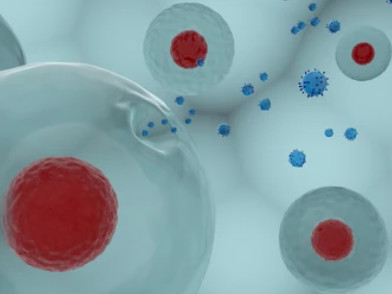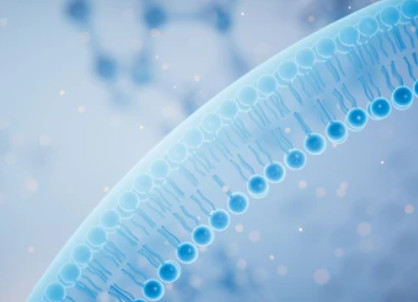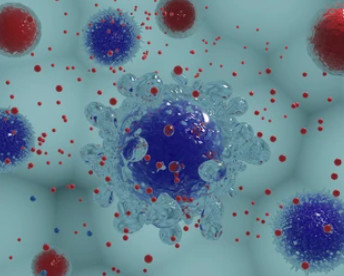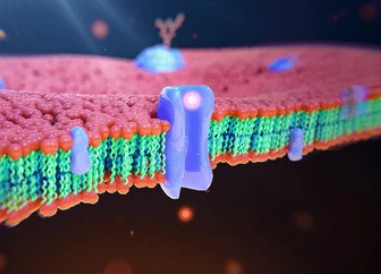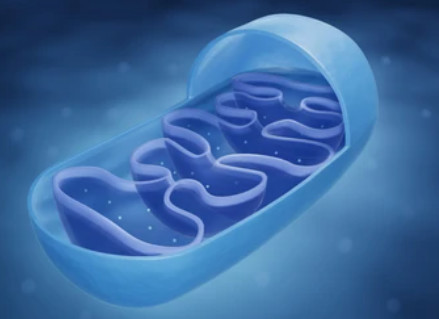Mitochondrial Calcium Ion Detection
Online InquiryIn addition to playing an essential role in the production of ATP, mitochondria also regulate intracellular Ca2+ concentration by acting as local Ca2+ buffers. Excessive accumulation of calcium ions within the mitochondria can lead to mitochondrial dysfunction and oxidative stress, ultimately inducing mitochondrial permeability transition and cell death through apoptosis. Therefore, the accurate monitoring of mitochondrial calcium is critical. Here, Creative Proteomics provides customized and one-stop mitochondrial calcium ion detection services designed to accelerate the success of our clients' projects.
Pathophysiology of mitochondrial Ca2+
Mitochondrial calcium ions play a crucial role in different cellular processes, such as the regulation of ATP production, mitochondrial metabolism, and cell death. Calcium ions are actively transported from the cytoplasm into the mitochondria, where they can stimulate mitochondrial enzyme activity and oxidative phosphorylation. Moreover, calcium ions are involved in the regulation of mitochondrial membrane potential, which is essential for maintaining mitochondrial function and energy production. Notably, increased mitochondrial Ca2+ influx and deregulation of intracellular Ca2+ are both potent triggers of necrosis, apoptosis and autophagy. Since the homeostasis of mitochondrial Ca2+ is intimately linked to both cell growth and death, mitochondrial Ca2+ has been implicated in various pathophysiological processes. In addition to being a novel feature role of cancer pathology, mitochondrial Ca2+ dynamics are associated with inflammatory responses, cardiomyocyte contraction and heart failure, insulin secretion and diabetes, as well as neuronal homeostasis and neurodegeneration.
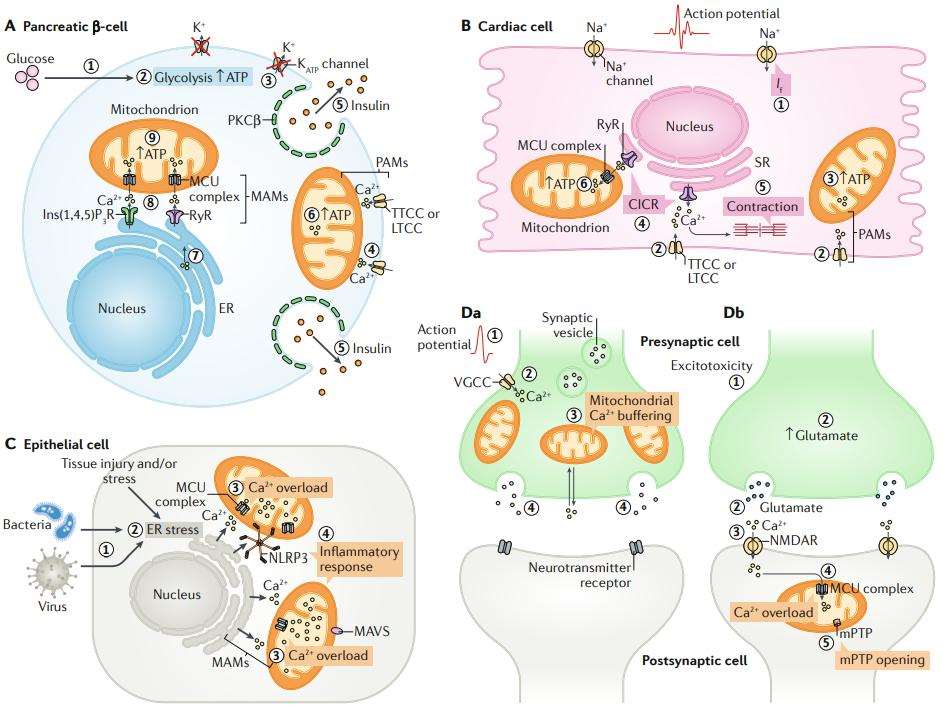 Fig. 1
Role of mitochondrial Ca2+ in pathophysiological processes. (Giorgi, Carlotta, Saverio Marchi, and Paolo
Pinton, 2018)
Fig. 1
Role of mitochondrial Ca2+ in pathophysiological processes. (Giorgi, Carlotta, Saverio Marchi, and Paolo
Pinton, 2018)
Our mitochondrial calcium ion detection service
| Common calcium ion probes are recommended | |
|---|---|
| Green fluorescence | Fluo-3 |
| Fluo-4 | |
| Fluo-8 | |
| Cal-520 | |
| Calbryte 520 (No probenecid) | |
| Red fluorescence | Rhod-2 |
| Rhod-4 | |
| Cal-590 | |
| Calbryte 590 (No probenecid) | |
| Crimson fluorescence | Cal-630 |
| Calbryte 630 (No probenecid) | |
Our service is based on the use of fluorescent proteins and dyes to monitor mitochondrial calcium. Among them, Rhod-2, AM, is a derivative of Rhodamine 123, which binds to calcium ions to produce fluorescence. Due to its positive charge properties, it specifically accumulates in the mitochondria, thus enabling effective partitioning to the mitochondria to measure mitochondrial Ca2+ levels. Our service uses a fluorescence microplate reader with an excitation wavelength of 550 nm and an emission wavelength of 590 nm, which enables high-throughput quantitative determination of calcium concentration in mitochondria. When using this type of dye, our staff is careful to avoid the accumulation of the dye in other organelles, such as liposomes, or leaving it in the cell cytoplasm.
Sample requirement
- Living Cells
Instrument platform
- Microplate reader
- Fluorescence microscopy
- Flow cytometry
Workflow of our services
- Sample preparation
- Rhod-2, AM staining
- Cell imaging and image analysis
- Calculating calcium ion concentration in mitochondria
Calcium plays a key role in many cellular processes, and we can effectively monitor mitochondrial calcium accumulation and compare how this function is affected by genetic factors and drugs. If you have any questions or concerns about our mitochondrial calcium ion detection service, please feel free to contact us at any time. We look forward to working with you on your next projects.
Reference
- Giorgi, Carlotta, Saverio Marchi, and Paolo Pinton. "The machineries, regulation and cellular functions of mitochondrial calcium." Nature reviews Molecular cell biology 19.11 (2018): 713-730.
Related Services
* For Research Use Only. Not for use in diagnostic procedures.



